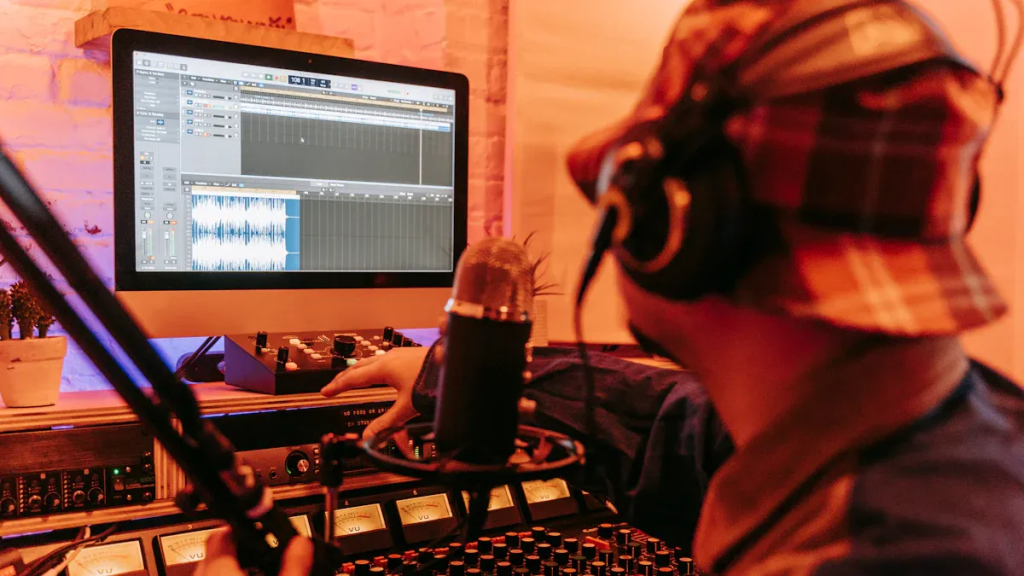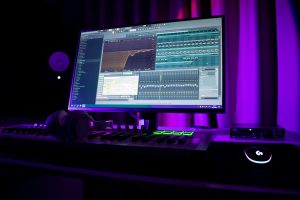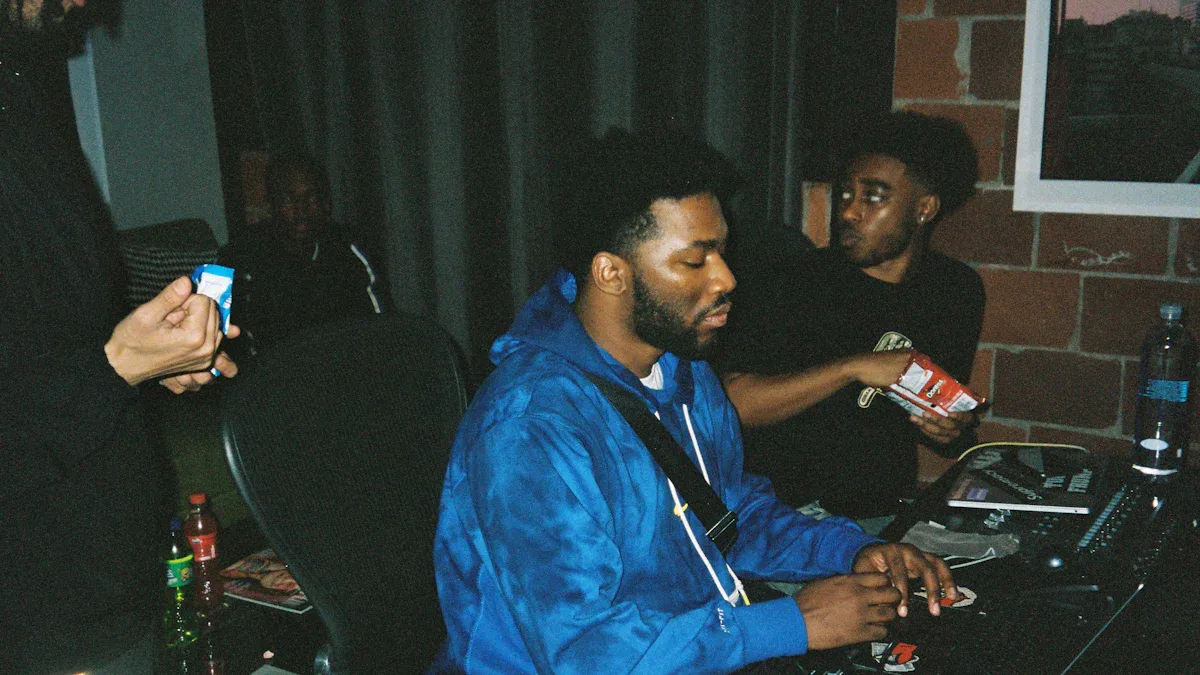Drill music has a strong, rough energy that’s hard to miss. It started in Chicago and became popular worldwide. When you mix its power with Trap’s loud 808s and melodies, you get drill trap. This style is both intense and moody. But here’s the problem: how can your beats be unique when so many people are trying? The solution is in your creativity and skills. By trying new sounds and being bold, you can make beats that stand out and stay memorable.
Key Takeaways
Set your BPM between 140 and 150 for Drill Trap. Change the speed to match the mood you want.
Make drum patterns with tricky hi-hats and strong kicks. Add layers for depth but keep the beat simple.
Use minor scales and spooky sounds for melodies. Try sampling to make your beats sound new and exciting.
Add effects like reverb and distortion to improve your sounds. Mixing effects can make your music feel full and interesting.
Include vocal chops and a cool producer tag for style. These make your beats stand out in the Drill Trap genre.
Key Elements of Drill Trap Beats

Tempo and BPM in Drill and Drill Trap
The tempo is the heartbeat of any beat, and Drill Trap is no exception. Drill music typically sits in the range of 140 to 150 BPM, giving it a slow yet intense vibe. This slower tempo allows the lyrics to hit harder and gives the beat room to breathe. When you mix Drill with Trap, you can experiment with tempos slightly outside this range, but staying close to the core BPM keeps the energy intact.
Think about how artists like Chief Keef and Pop Smoke use tempo to create tension and mood. Their beats often feel like a march, pulling listeners into the story. If you’re crafting Drill Trap beats, start by setting your BPM within this range. Then, tweak it based on the vibe you’re aiming for. A slightly faster tempo can add urgency, while a slower one can make the beat feel heavier and more dramatic.
Drum Patterns and Percussion in Drill Beats
Drums are the backbone of Drill music. The genre is known for its syncopated hi-hats, rolling snares, and hard-hitting kicks. UK Drill, in particular, has popularized the use of offbeat hi-hats and ghost notes, creating a unique swing that feels unpredictable yet hypnotic.
When designing drum patterns for Drill Trap, focus on layering. Start with a solid kick and snare combo, then add hi-hats with irregular spacing. This creates the signature “stutter” effect that Drill is famous for. Percussion elements like rimshots and claps can add texture, but don’t overdo it. Drill beats thrive on simplicity and precision.
Take inspiration from the NY Drill scene, where artists like 22Gz and Sheff G have mastered the art of drum programming. Their beats often feel raw and aggressive, yet they maintain a sense of rhythm that keeps listeners hooked.
Melodic Atmosphere in Drill Music
Melody sets the mood in Drill music. Whether it’s eerie piano loops, haunting strings, or dark synths, the melodic elements create the emotional core of the beat. UK Drill often leans into minor scales and dissonant tones, giving the music its signature ominous feel.
To build a strong melodic atmosphere in Drill Trap, start with a simple loop. You can use a piano or synth to lay down a haunting melody. Then, layer atmospheric sounds like pads or reverb-drenched effects to fill out the space. Sampling is another powerful tool. Many Drill producers sample famous tracks, flipping them into something darker and more intense.
Female rappers in Drill music have recently brought fresh melodic ideas to the genre, often blending softer tones with hard-hitting beats. This contrast can make your Drill Trap beats stand out. Experiment with combining light and dark elements to create a unique soundscape.
Sound Design and Instruments in UK Drill and Drill Trap
Making your drill beats unique needs good sound design. UK drill has a special style with dark, sharp sounds. To make beats that stand out, focus on creating cool sounds and layering them well.
Use the Right Tools
Drill producers often use virtual synths to make their sounds. Popular tools like Serum, Massive, and Sylenth1 help create many tones and textures. These tools let you make deep basslines or spooky pads. If you’re new, start with presets and adjust filters or envelopes. With practice, you’ll learn to make sounds that fit drill’s dark vibe.
Tips to Improve Your Sound
Try advanced techniques to make your beats better:
Granular Synthesis: Break sounds into small pieces and rearrange them for cool effects.
Wavetable Synthesis: Create changing sounds that add life to your beat.
FM Synthesis: Make sharp, metallic tones for melodies or basslines.
Layering is also key. Stack sounds to make them rich and full. For example, mix a sub-bass with a rough 808 for a strong low end. Or, pair a creepy piano loop with a soft synth pad for a spooky feel.
Pro Tip: Try unusual sounds. Mixing things like orchestra strings with trap drums can make your beats unforgettable.
Instruments in UK Drill
UK drill uses simple but strong instruments. It often has a dark, movie-like feel. Strings, pianos, and choirs are common, usually in minor keys for a scary vibe. Brass or plucked sounds can add drama too. Pick instruments that fit your beat and add to its rhythm or texture.
Sampling is also big in drill music. Producers take old songs and make them fresh. Find samples that match your mood, then chop or stretch them to fit. Add effects like reverb to blend them with your beat.
Keep It Simple but Creative
Don’t add too much to your beat. Too many sounds can make it messy. Focus on a few great sounds and make them shine. For example, a strong 808 bassline and a spooky melody can carry a track. Balance creativity with simplicity.
By learning sound design and using the right instruments, you can make drill trap beats that stand out. The goal is to create a vibe that grabs listeners and keeps them interested.
Step-by-Step Guide to Crafting Drill Trap Beats
Setting the BPM for Drill Trap
The tempo is the foundation of your beat. Drill Trap beats typically sit between 140 and 150 BPM, giving them a dark and intense vibe. Start by setting your BPM within this range. If you want a heavier feel, lean toward the lower end. For a more energetic sound, push closer to 150 BPM.
Choosing the right BPM isn’t just about numbers; it’s about the mood you want to create. A slower tempo can make your beat feel dramatic and weighty, while a faster one adds urgency. Experiment with different tempos until you find the sweet spot that matches your vision.
Pro Tip: Use AI tools like Tempolor to quickly test different BPMs and find the perfect match for your drill trap beat.
Designing Drill-Inspired Drum Patterns
Drum patterns are the heartbeat of drill beats. To nail the drill vibe, focus on syncopation and swing. Start with heavy kicks and sharp snares. Add hi-hats with irregular spacing, triplets, and rolls to create that signature stutter effect. Layer ghost notes and rimshots for extra texture.
Here’s a quick guide to designing your drum patterns:
Start with the basics: Lay down a kick and snare pattern that hits hard.
Add hi-hats: Use offbeat hi-hats and rolls to create movement.
Incorporate percussion: Rimshots, claps, and ghost notes add depth.
Keep it clean: Avoid overcrowding your drum track. Drill beats thrive on precision.
If you’re new to drum programming, check out tutorials on UK Drill production. These guides often include beat-making tips and software recommendations to help you get started.
Tip: Premade drill loops can be a lifesaver. Platforms like Soundtrap offer loops that match your BPM and key, making it easy to build your drum patterns.
Layering Melodies and Atmospheric Sounds
Melody and atmosphere are what give drill beats their emotional punch. Start with a simple melody in a minor key. Pianos, strings, and synths work great for creating a haunting vibe. Once you have your melody, layer atmospheric sounds like pads or reverb-drenched effects to fill out the space.
Here’s how to build your melodic layers:
1. Create a melody: Use a piano or synth to craft a loop in a minor scale.
2. Add bass: An 808 bassline is essential for drill trap. Make it deep and punchy.
3. Layer atmospheric sounds: Pads, choirs, or ambient effects can add depth.
4. Experiment with sampling: Flip old tracks into something darker and more intense.
Don’t be afraid to mix light and dark elements. Combining soft tones with hard-hitting drums can make your beat stand out. For example, a delicate piano loop paired with aggressive percussion creates a unique contrast.
Pro Tip: Use AI tools like Tempolor to generate melodies and atmospheric layers. These tools can speed up your workflow and help you experiment with different sounds.
Structuring and Arranging Drill Beats
Arranging drill beats is like planning a story. You need a strong start and a clear flow to keep listeners interested. A good structure also gives artists space to perform. Here’s how to arrange your drill beats step by step:
1. Start with the Intro Begin with something simple and moody. Use a softer version of your melody or a filtered sound to set the tone. This grabs attention without being too much. For example, a spooky piano or an echoing synth works well for a drill vibe.
2. Build the Verse The verse is where things pick up. Add your full drum pattern, including kicks, snares, and hi-hats. Keep the melody steady but try small changes, like adding a new sound or shifting the pitch slightly, to keep it fresh.
3. Drop the Hook The hook is the most exciting part of your beat. This is where everything comes together. Add heavy 808s, more percussion, and make the melody stand out. A strong hook can make your beat unforgettable.
4. Add a Bridge or Breakdown A bridge or breakdown gives a short pause before the next section. Remove some drums or add a new sound to create contrast. This keeps the beat interesting and avoids repetition.
5. End with an Outro Finish by fading out or bringing back the intro melody. This ties the track together and leaves a lasting impression.
Pro Tip: Try tools like Casinteg for ideas on layering and arranging. While it’s made for other uses, its method of organizing layers can inspire your beat structure.
| Aspect | Details |
| Technique | High-voltage electro-pulse (HVEP) rock-breaking |
| Purpose | Investigate influence of electrode arrangement on rock-breaking efficiency |
| Findings | Coaxial cylindrical drill bit shows highest electric field intensity and superior performance in drilling tests |
| Implications | Guides design of HVEP drill bits to improve efficiency and reduce energy consumption |
By following these steps, you can create drill beats that are well-organized and exciting, keeping listeners engaged from start to finish.
Mixing and Mastering for a Polished Sound
Mixing and mastering are the final touches that make your drill beats sound professional. Think of it as adding the last details to a drawing—it’s about making everything clear and balanced.
Mixing Tips
Gain Staging: Adjust the volume of each track to avoid distortion.
Level Balancing: Balance the drums first, then add the bass. Make sure the kick and 808 don’t clash.
EQ: Use EQ to give each sound its own space. For example, remove low frequencies from hi-hats to keep the mix clean.
Compression: Control the loudness and add punch. Use parallel compression to make drums and 808s hit harder.
Sidechain Compression: Make the kick stand out by linking it to the 808. This creates a pumping effect common in drill beats.
Mastering Tips
Saturation and Distortion: Add warmth and make the mix sound fuller.
Stereo Imaging: Keep bass sounds in the center. Spread hi-hats and synths to make the mix wider.
Reverb and Delay: Use these effects lightly to add depth. A little reverb on the melody can make it feel bigger.
Note: Mixing is both technical and creative. Experiment with different methods to make your beats emotional and unique.
| Technique | Purpose |
| Gain Staging | Prevent distortion, allow headroom |
| Level Balancing | Balance drums and bass |
| EQ | Separate sounds, avoid overlap |
| Compression | Control volume, add punch |
| Parallel Compression | Strengthen drums and 808s |
| Sidechain Compression | Highlight kick over 808 |
| Saturation & Distortion | Add warmth and fullness |
| Stereo Imaging | Center bass, widen other sounds |
| Reverb/Delay | Create space and atmosphere |
By mastering these techniques, your drill beats will sound polished and ready for artists to use.
Advanced Techniques to Make Drill Trap Beats Stand Out
Picking Unique Sounds and Using Samples in Drill Music
Choosing cool sounds makes your drill trap beats special. Drill music often uses dark, movie-like tones, but you can try new ideas. Use orchestral instruments like strings or brass for drama. Mix these with spooky synths or haunting piano loops to set a chilling mood.
Sampling is also a great way to stand out. UK drill producers often take old songs and make them fresh. Find samples that match your vibe. Cut them up, stretch them, or change their pitch to fit your beat. Add effects like reverb or distortion to blend the sample smoothly into your track.
Tip: Don’t stick to regular drill sounds. Try using nature sounds, like rain or wind, with hard-hitting beats. This mix can make your music unforgettable.
Using Creative Effects in Drill Trap (like reverb, delay, distortion)
Effects can make your drill trap beats amazing. Reverb adds space to snares and melodies, giving them a dreamy feel. Delay makes sounds thicker and adds rhythm. Distortion gives basslines and leads a rough, edgy sound.
Here’s how to use effects well:
Add reverb to snares and pads for a spacious feel.
Use delay on claps or hi-hats to make them groove.
Add distortion to 808s for a stronger, punchy bass.
AI plugins can help too. These tools suggest effects for your sounds, saving time and sparking ideas. For tracks with vocals, reverb and delay can create a deep, immersive vibe.
Pro Tip: Try mixing effects. For example, use reverb and distortion together on a melody to make it feel both big and gritty.
Trying New Arrangements in UK Drill
Arranging your beat is like telling a story. UK drill uses exciting arrangements to keep people listening. Start with a moody intro using soft or filtered sounds. Build up the verse by adding drums and small melody changes.
The hook should be powerful. Use all your drums, heavy 808s, and make the melody pop. For the bridge or breakdown, remove some sounds or add something new for contrast. This keeps the beat fresh and interesting.
Tip: Try surprising arrangements. Start with the hook to grab attention, then move into a simple verse. This unexpected setup can make your beat stand out in the drill music world.
Adding Vocal Chops and Producer Tags to Drill Beats
Vocal chops and producer tags can take your Drill Trap beats to the next level. They add personality, create memorable moments, and help you establish your signature sound. If you’re not already using them, you’re missing out on a powerful way to make your beats stand out.
Why Use Vocal Chops?
Vocal chops are short, edited vocal samples that you can sprinkle throughout your beat. They add texture, rhythm, and emotion. A well-placed vocal chop can make a hook more engaging or give your beat a unique vibe.
Here’s how you can use them:
Create Call-and-Response Patterns: Use vocal chops to “answer” your melody or drums.
Add Energy to Drops: Layer vocal chops over your 808s and kicks for a dramatic effect.
Build Atmosphere: Use reverb and delay on vocal chops to create a haunting, spacious feel.
Tip: Look for royalty-free vocal packs online or record your own voice. Then, chop, pitch, and stretch the samples to fit your beat.
Producer Tags: Your Audio Signature
Producer tags are like your personal watermark. They let everyone know who made the beat. A good tag is short, catchy, and fits the mood of your music.
Here’s how to make your tag work:
Keep It Short: A quick phrase or sound works best.
Match the Vibe: If your beats are dark and moody, your tag should feel the same.
Place It Strategically: Add your tag at the intro or right before the drop.
Pro Tip: Use effects like distortion or pitch-shifting to make your tag stand out.
By adding vocal chops and a killer producer tag, you’ll give your Drill Trap beats a professional edge and make them unforgettable.
Drill music is known for its dark tunes, tricky drum beats, and strong 808s. When mixed with trap’s energy, it creates drill trap—a style that’s both powerful and moody. To make your beats special, go beyond the basics. Test out fresh sounds, use surprising arrangements, and don’t fear breaking the rules.
Becoming a top producer takes patience. Check out online lessons, read software guides, and watch how-to videos to improve. Every beat you make, edit, and finish helps you grow. Making music is a journey, so keep learning and trying new things.
Tip: Work on your unique sound. The more you try and practice, the closer you’ll get to making beats that stand out in drill music.
FAQ
What makes Drill Trap beats different from other genres?
Drill Trap beats combine the dark, moody vibe of drill music with the heavy bass and energy of trap. The unique drum patterns, haunting melodies, and intense 808s create a sound that stands out in the music world.
How do I make my Drill Trap beats sound professional?
Focus on clean mixing and mastering. Balance your drums and bass, use EQ to separate sounds, and add effects like reverb or distortion. A polished beat grabs attention and feels ready for artists to use.
Can I use drill music lyrics in my beats?
Yes, you can. Drill music lyrics often reflect raw emotions and storytelling. Adding vocal samples or lyrics can enhance your beat’s mood and make it more engaging for listeners.
What tools do I need to start making Drill Trap beats?
You’ll need a DAW (like FL Studio or Ableton), virtual instruments, and drum kits. Plugins for sound design, like Serum or Massive, are also helpful. Start simple and upgrade as you grow.
How can I make my beats stand out in a crowded genre?
Experiment with unique sounds, creative arrangements, and unexpected effects. Try blending orchestral instruments or nature sounds with your beats. Adding vocal chops or a signature producer tag also helps you stand out.






